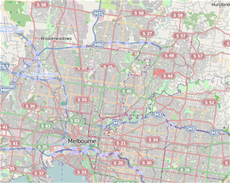Microsoft in Education Global Forum, Dubai, 2...
0 comments
 1
1  In my previous four blog posts I've been exploring the question "why innovate?" So by now you should have a compelling argument for adopting virtual learning environments in your school.
In my previous four blog posts I've been exploring the question "why innovate?" So by now you should have a compelling argument for adopting virtual learning environments in your school.
In the last post I explored how we Build Vision across our Schools, today I want to explore how we make that vision into a reality.
From here....
So you've decided that you are going to use innovative practices to either build on your strengths, address current compromises or simply to improve student learning outcomes. The first step is to audit where you are now. There are a number of ways which you can do this. 1. Map it out on paper using a graphic organiser such as a SWOT (strengths, weaknesses and other) Analysis or similar. 2. Write a story describing the current situation including what students and teachers actually do.
The point is to get a clear picture of where you currently are. Without knowing where we are there is no way we can accurately measure the impact of the proposed innovation.
...to where?
Having identified where we are, now it is time to move. This is where the biggest mistakes are usually made. This is because there is a misunderstanding about innovation. Many people mistakenly believe that we can map out the whole process, find budget and then launch a pilot that will prove that our innovative ideas work. This is not the best approach. Instead....
Ask yourself, "what do I know and what do I need to find out?"
Pilots only ask and answer one question. This would be fine if the process only need to answer one question. Unfortunately innovation is more complex and more subtle than that. Our questions and our learning should be taken in small agile steps. What do I know? What do I need to find out? How can I find that out? Ideally, when dealing with classroom innovation, a new question should be asked and answered every two weeks at the most. If it takes you longer than a fortnight to answer the question, then you're asking the wrong question.
Ask yourself: how does the innovation change the learning strategies the student's use, how does it change the learning outcomes, or what students and teachers actually do? Compare the answers to these questions against where you started.
Innovation is an experiment....
and with each experiment we learn more and are better equipped to make better decisions about our innovative learning and teaching practice in the future.
Please use the comments to share your stories and experiences of innovation.
This is the fifth, and last, post in a series on "Why Innovate?" If you haven't read them already consider also reading the previous posts: Build On Your Strengths, Addressing Compromises By Using Virtual Learning, Improving Student Learning Outcomes and Building Vision Across Your School. In the next post, I will start a new series, "Preparing and Supporting Change."
Note: Image taken from Open Street Map http://www.openstreetmap.org/#map=11/-37.7797/145.0412